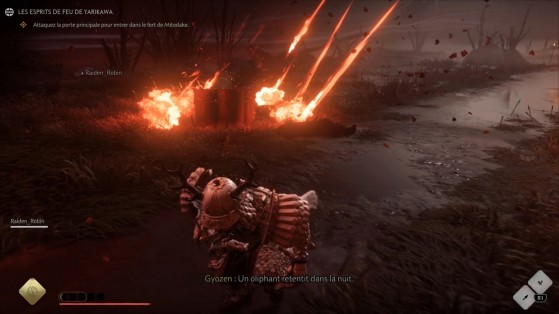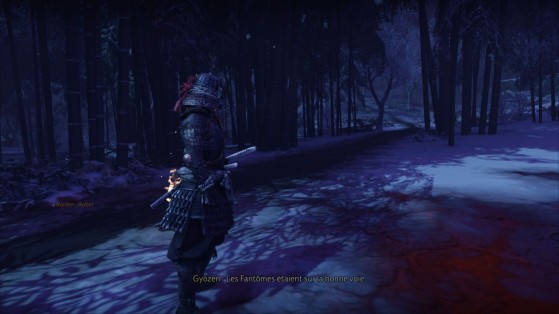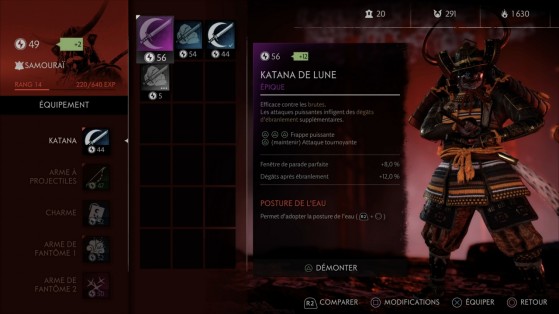Since Friday, Ghost of Tsushima players have been able to experience an online Co-Op mode for two to four players. Between hand-crafted missions and equipment progression, Legends has certainly left its mark on us, and here’s why.
A Change in Approach
With this DLC, Sucker Punch has moved Ghost of Tsushima to the “Games as a Service” model without requiring players to jump through any new hoops or pay any additional fees. All this new content can be unlocked either through your in-game exploits or as you work your way through the story, whether it be cosmetics, new abilities, or equipment for your ghost. Numerous new features, which are emblematic of the current gaming landscape, have been born out the transition online: daily challenges, item strength depicted by colour, classes that can be levelled up, and highly replayable missions. Yet progressing through Legends has been made to feel a clear and enjoyable experience thanks to several quality of life features that some full-price titles still lack.
Here’s a simple example: when you start a mission, you know right from the off that you don’t have to loot anything, as you’ll only receive your rewards when you complete your task, so there’s no reason to scamper across the map in search of any such interaction. This is all done in a very fluid manner, with narration and a thin corridor in the ghost world subtly masking loading screens in a way that never feels out of place. Players will find their first experience of Legends to be stunning, especially given that they’ll need to put in a hefty 15 hours before they can get their hands on some additional gear. There’s also the 3-part raid on Onibaba to come, still lurking in the background unavailable.
While they wait for this new content, players can sink their teeth into a dozen missions that can be played as a duo, with difficulty modes designed to make the experience more challenging, and four Survival maps — a mode you almost never see nowadays — which can be played with a party of 4 and which offer the perfect opportunity to level a class. Gamers are certainly no stranger to a good horde mode given how ubiquitous it was last decade, and while it’s a well-crafted addition to Legends, having 25 waves of enemies even at Silver makes it simply just too much to conceivably finish.
By all means, the main highlight of Legends is its Stories mode, plunging two players into the indecipherable island with tales of historical exploits. While this mode never makes any secret of which path to take or which two bosses to fight, each mission works as its own small independent scenario, accompanied by an omnipresent narrator and several rather rudimentary cutscenes. But just as previously mentioned, players never find their immersion challenged by external factors, a welcome change making this mode a very enjoyable experience that flows from one challenge to the next.
Phantom Blades
There are four different classes for you to get your hands, each one suited to a different type of player: Samurai are completely reliant on close-range combat, Hunters work from a distance, Ronin are your support class, and Assassins are at their best slinking from shadow to shadow. All classes have the same items at their disposal, those being a sword, samurai tools, and any gear that you’ve picked up previously, all of which can be used by any class. Your chosen archetype will determine your active skill, as will the way in which you fill out your class-specific skill tree. It offers enough variety to make a difference on the battlefield and in survival mode, where you’ll need to form a well-balanced and coordinated unit to prevent being overwhelmed by waves of enemies on higher difficulties.
Any improvements to your character or gear take place in a classic menu, but one that is reactive enough to prevent you from getting lost in 36 sub-menus: you equip your gear, buy your skill, and then you go, all in a cool 20 seconds or less. As you work your way through the missions on bronze, Legends offers players new features designed to add a new layer to your Co-Op journey, pairing them with a range of new enemies.
And you won’t have to look far for your first experience of them either. These new features add hidden enemies that can only be revealed by lightning, as well as red, blue, and green enchantments that make eliminating enemies of the corresponding colour easier. These additions do enough to prevent repetitiveness and allow for some interesting encounters. From gold difficulty onwards, all three acts in a mission receive one or more handicaps designed to make your progression towards the Torii gate that much more difficult, without ever making it feel unfair.
Silver also adds three secondary objectives to the mission: a cursed chest containing some formidable enemies to vanquish, a roll of parchment to find, and a curse that always makes Act 3 more challenging. Each new difficulty level also comes with modifications to the enemy compositions you come up against. While combat in Ghost of Tsushima might have taken somewhat of a backseat to some of its more famous climbing sections, all these changes are more than enough to make fighting in Legends a memorable experience.
Final Thoughts
Ghost of Tsushima Legends is an excellent surprise and a very strong Co-Op expansion from Sucker Punch Productions. By keeping the fundamental gameplay experience from single-player and complimenting it with mechanics most often attributed to the Games as a Service model, all while steering clear of any notion of monetisation, Legends often feels spotless. One could be forgiven for assuming Legends to be a new, tacked-on Co-Op mode, lacking in both ambition and polish, but ultimately it’s clear that Sucker Punch have invested significant time and attention into this new update. Legends is well constructed, gripping, and never feels bloated. While it is still victim to some of the flaws that befall the Games as a Service model and its survival maps tend to be a bit of a slog, Legends’ content is dense enough and strong enough for players to quickly and easily fall for its charms.
Translated by James Whitmore.










